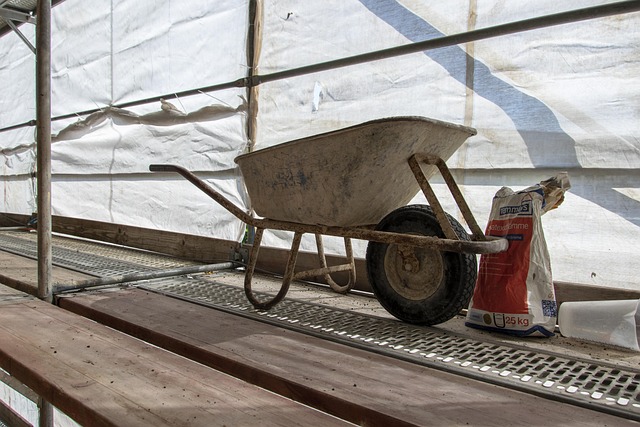Vacuum excavation potholing is a non-destructive technique that locates and extracts utilities buried beneath surfaces with precision, using high-pressure air or water to create a suction force. This method minimizes damage to critical underground assets and reduces delays caused by unexpected utility strikes, making it ideal for urban areas with complex networks. By creating detailed maps, contractors can plan more efficiently, enhancing safety and project completion times by up to 40%, compared to traditional methods. Best practices include advanced technologies like ground-penetrating radar (GPR), meticulous planning, skilled technicians, regular maintenance, and clear communication protocols.
In the realm of infrastructure maintenance, minimizing delays is paramount. This is where vacuum excavation potholing emerges as a game-changer. As a non-destructive approach, it offers precision and efficiency compared to traditional methods. Accurate utility mapping before excavation further enhances this process, avoiding costly mistakes and expediting projects. This article delves into the benefits of vacuum excavation potholing, explores best practices for safe operations, and presents compelling case studies showcasing its impact on reducing delays in critical infrastructure projects.
Understanding Vacuum Excavation Potholing: A Non-Destructive Approach
Vacuum excavation potholing is a non-destructive method that has revolutionized road maintenance. Unlike traditional excavation methods, it employs a powerful vacuum to accurately locate and extract utilities buried beneath surfaces. This technique is particularly useful in urban areas where complex utility networks are close to the surface, minimizing the risk of damaging underground infrastructure during pothole repairs.
By using high-pressure air or water, vacuum excavators create a suction force that gently lifts materials above ground level, revealing the void below. Operators can then precisely identify the location and depth of utilities such as pipes, cables, and fibers before proceeding with pothole repair or construction projects. This non-invasive approach ensures that critical underground assets are protected while facilitating efficient roadwork, ultimately reducing delays caused by unexpected utility strikes.
The Benefits of Accurate Utility Mapping Before Excavation
Accurate utility mapping before excavation, facilitated by advanced techniques like vacuum excavation potholing, offers significant advantages. This non-destructive method allows for precise identification and location of underground utilities, ensuring that construction projects avoid costly damage to crucial infrastructure. By creating detailed maps, contractors can plan their work more efficiently, minimizing disruptions to roads, sidewalks, and other public areas often associated with traditional excavation methods.
Moreover, accurate utility mapping enhances safety by reducing the risk of striking hidden lines, such as water, gas, or electrical cables. This not only protects workers but also prevents service interruptions and potential hazards that can arise from accidental damage. The result is smoother, more timely project completion, saving time and money for both contractors and clients alike.
Best Practices for Efficient and Safe Potholing Operations
Potholing operations require a meticulous approach to ensure efficiency and safety, especially in urban areas with complex underground utility infrastructure. Best practices for vacuum excavation potholing involve precise planning and skilled technicians. Before starting any excavation, thorough utility mapping is crucial using advanced technology like ground-penetrating radar (GPR) or electric resistance (resistivity) surveys to identify the location and depth of buried utilities.
During potholing, utilizing vacuum excavation equipment with advanced control systems enhances accuracy and safety. Operators should adhere to set parameters for vacuum levels and cutting disk speeds to prevent damage to underground facilities. Regular maintenance and calibration of equipment ensure optimal performance. Additionally, establishing clear communication protocols between site managers, operators, and utility companies facilitates seamless coordination, minimizing delays caused by unexpected obstructions or utilities not marked during excavation.
Case Studies: How Accurate Potholing Reduces Delays in Infrastructure Projects
Accurate potholing, facilitated by advanced techniques like vacuum excavation potholing, has emerged as a game-changer in infrastructure projects. Case studies from various metropolises demonstrate that this method significantly reduces delays caused by traditional potholing practices. By precisely identifying and mapping underground utilities before excavation, vacuum excavation potholing minimizes the risk of damaging hidden assets, which is a common source of project holdups.
In these case studies, construction teams reported completion times for potholing tasks reduced by up to 40%. This efficiency gain translates directly into faster project timelines, enabling contractors to meet strict deadlines and enhancing client satisfaction. Moreover, accurate utility mapping facilitated by vacuum excavation has led to a substantial decrease in costly emergency repairs post-construction, further underscoring the method’s effectiveness in minimizing delays across infrastructure projects.
Accurate utility mapping and efficient vacuum excavation potholing are key strategies to minimize delays in infrastructure projects. By adopting best practices and leveraging technology, construction teams can significantly reduce the time and costs associated with unexpected utility strikes. These non-destructive methods not only ensure safety but also enable faster project completion, making them essential components of modern construction management.
